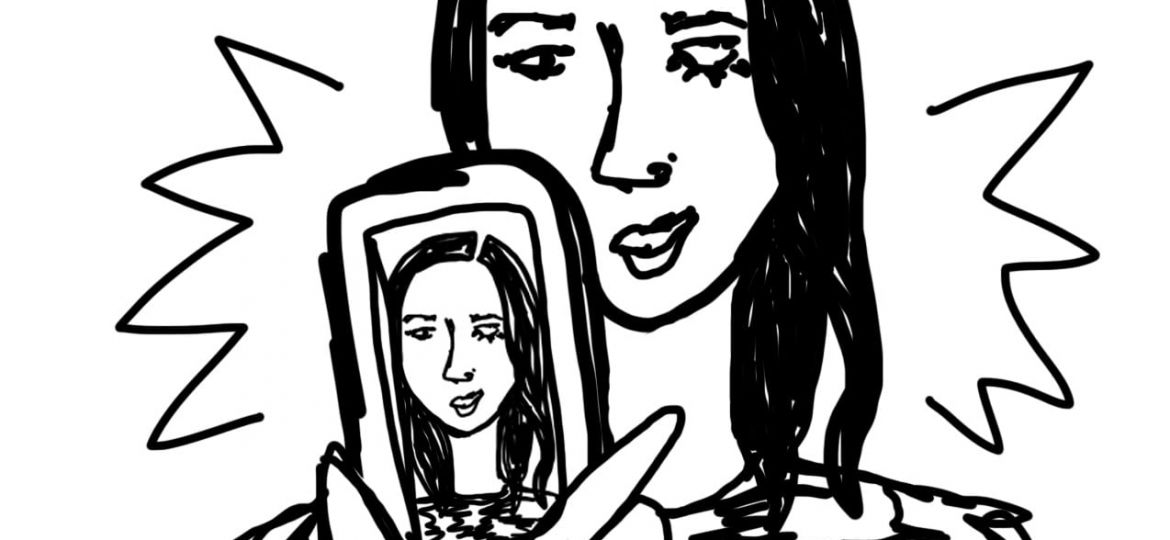
Everyone has friends who like Snapchat, and then they have friends who really like Snapchat. Although I myself have a Snapchat, I often forget to check it. When I open the application, I’ll often find 20 new snapchats from the same person, of 20 different funny faces taken from the same angle.
The emergence of the smartphone introduced new modes of communication. Now we have access to group texting and video chatting, and our devices interconnect social networking sites and applications. We can share where we are and what we are doing at any moment from anywhere. But where do Snapchat and the classic selfie photo fit into all of this?
As the technological generation, we have no fear of expressing ourselves both online and out in our community. Accordingly, the selfie has become a digitized version of a self-portrait. With our smartphones always clutched in our hands, we don’t need to carry around cameras and find people to take pictures of us. We can take pictures of ourselves and instantly share them with the world.
The question is: how are these selfies portraying our self-image? Snapchat is formed around the concept of taking ridiculous and nonsensical selfies and sending them to our friends. These pictures last only seconds, simulating making a quick face at your friend through the phone. It’s there for a moment and then gone forever. Snapchat will even notify you when someone takes a screenshot of a picture you sent. That way you can hunt them down and destroy the evidence.
Most importantly, Snapchat remains free from parental interference, at least for the time being. My mom has a Facebook, but she hasn’t even heard about Snapchat yet. It’s a realm still safe from the influence of older generations, and I say that with the utmost love and respect. Right now, we can send snapchats to anyone on our friend list without the fear of it being seen by dad or grandma.
In contrast, consider Facebook. When Facebook reached its height of popularity, many people thought it was only a fad, which we now see was a drastic understatement. Facebook has quickly become an important communication tool for many people. When I left for college, it became much more valuable to me. It was the fastest and easiest way for me to communicate with my friends back home and let my parents know I was still alive. There is a time and a place for selfies, but Facebook is not one of those places, despite the daily uploads by some of our peers.
Think back to that friend who posts a new album of selfies everyday, with captions like “Look at my new haircut,” or “I look totally horrible today, don’t I?” I like to call these people the attention-seekers of Facebook.
What kind of selfies are appropriate? Are awkward selfies the best? What about the stereotypical selfie at a famous landmark such as the bean in Chicago or the Eiffel Tower in Paris? How about a selfie next to an elephant? Selfies are supposed to be funny, a little snapshot of your life.
Other social networking sites, such as Twitter, comprise the much more public side of the equation. Many celebrities also post selfies of themselves. These raw, unedited pictures show us another side of them – a real, relatable side. A personal self-portrait.
Selfies play a large role in our social sphere by adding a personal element to pictures. They may just be a fad, or they may be the beginning of a whole new artistic style. As long as you practice moderation and discretion, the selfie can tell a lot about you. It can be a living diary of who you truly are right now.
Katie Haggstrom ’14 haggstro@stolaf.edu is from Omaha, Neb. She majors in English with an Africa and the Americas concentration.
Graphic Credit: EMMA JOHNSON/MANITOU MESSENGER

